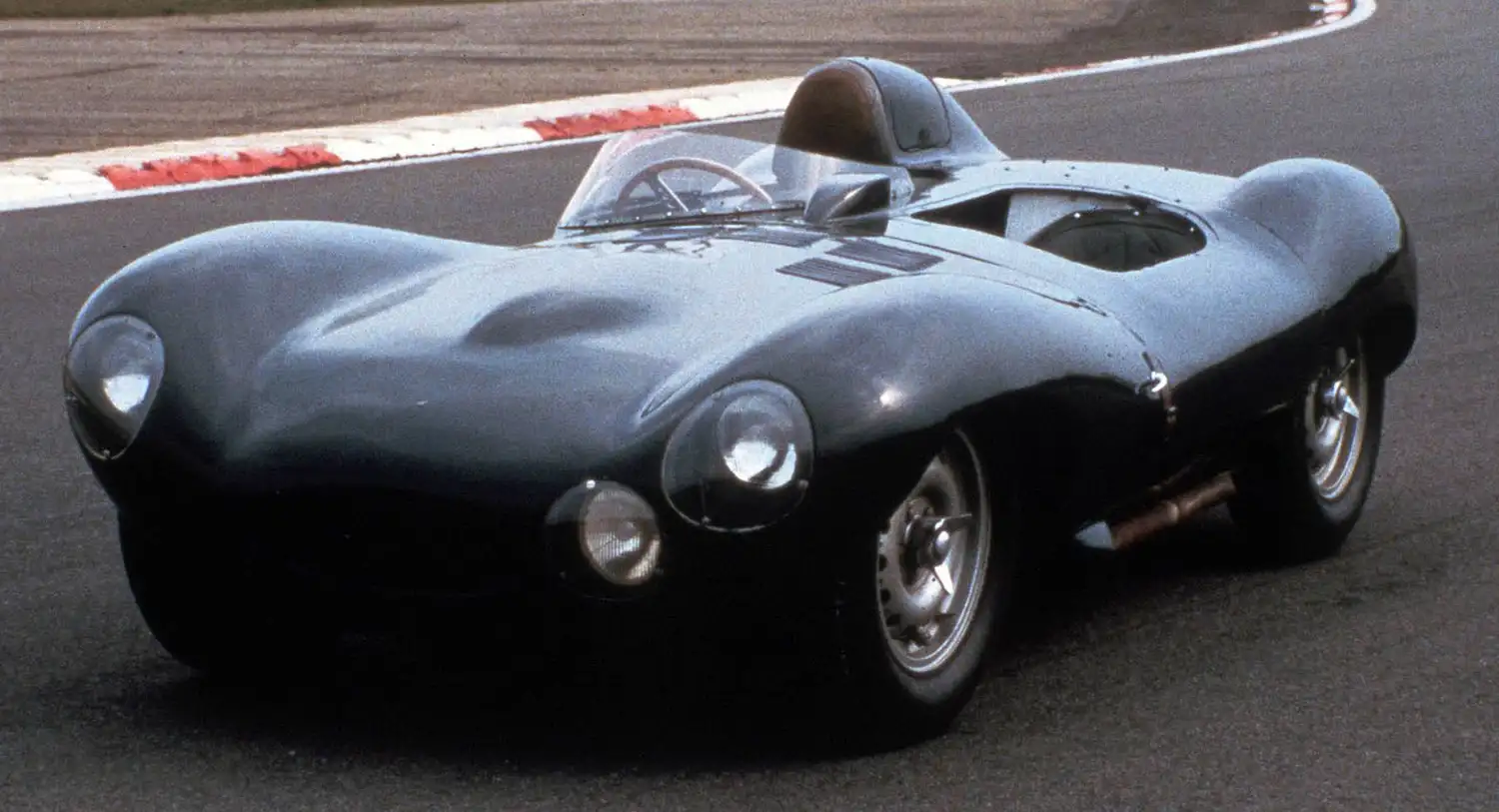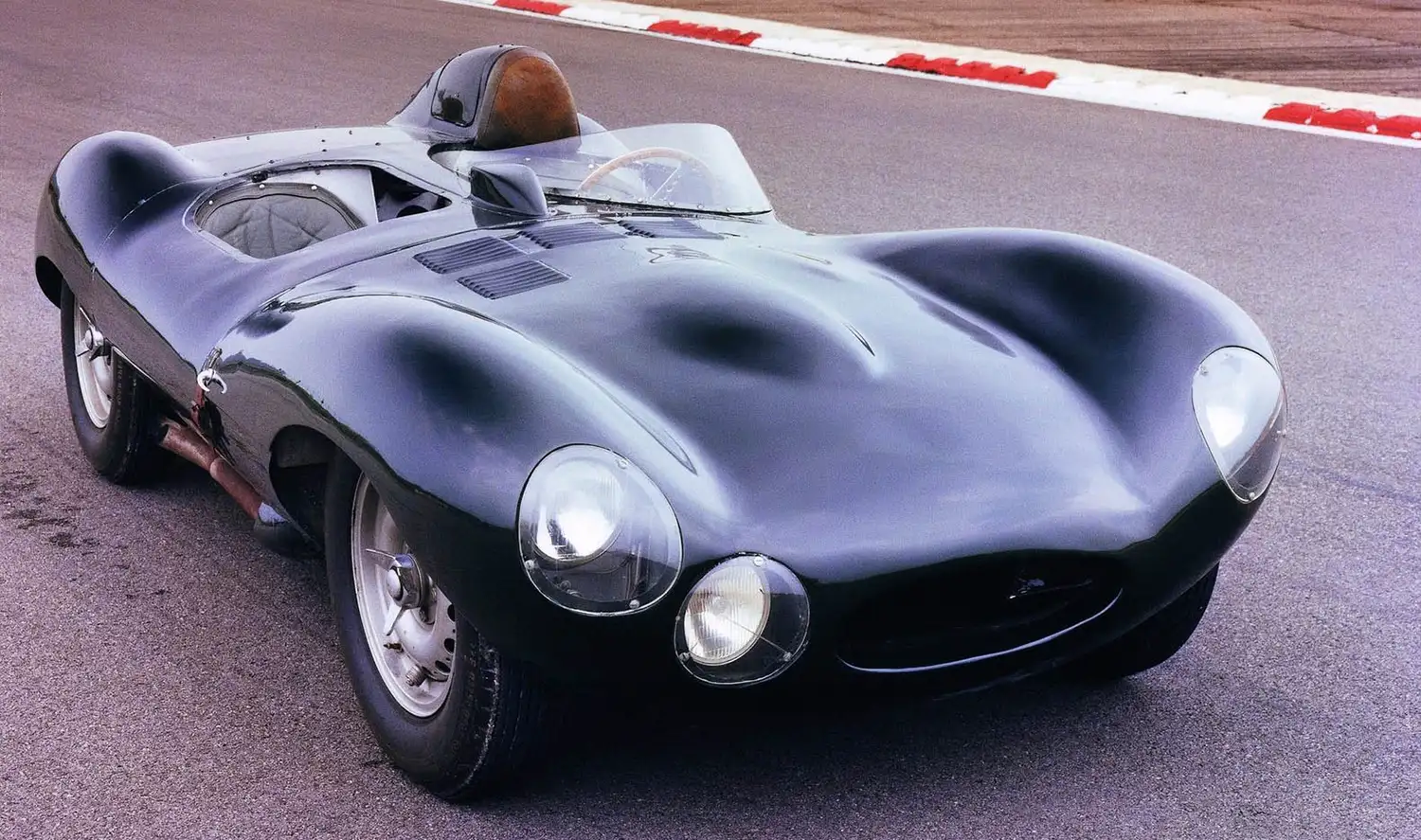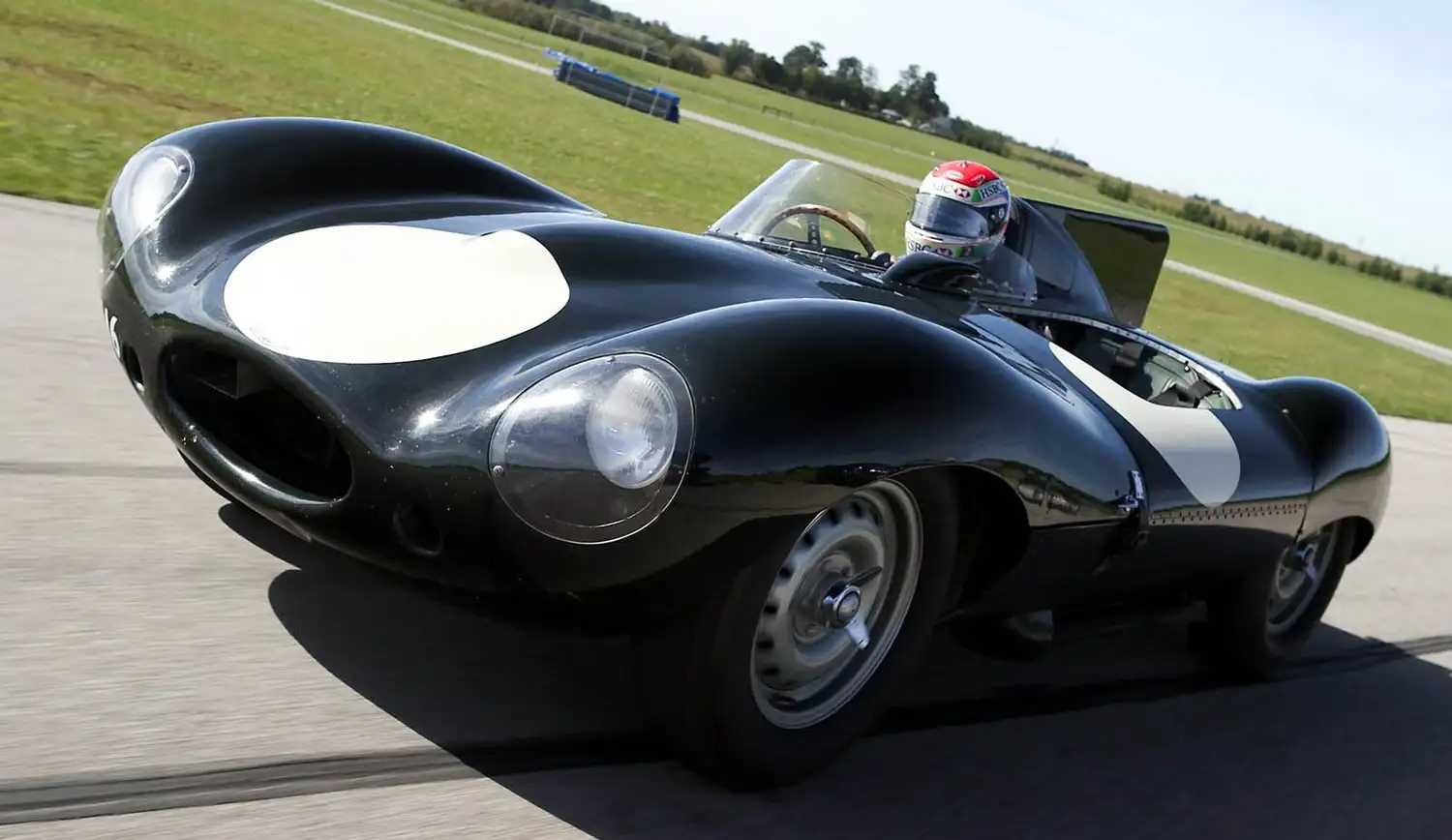
Overview
The Jaguar D-Type, following in the footsteps of the C-Type, was a revolutionary factory-built race car. While it retained the basic straight-6 XK engine design of its predecessor, which started at 3.4L and was later upgraded to 3.8L, the D-Type was fundamentally different in many ways. Its most notable innovation was the introduction of a monocoque chassis—a design that borrowed from aircraft engineering to enhance aerodynamic efficiency. Originally designed exclusively for racing, the D-Type’s road-going version, the Jaguar XK SS, was created after Jaguar’s withdrawal from competitive motorsport. This transition included practical modifications like an additional seat, another door, a full-width windshield, and a basic folding top. Sadly, on February 12, 1957, a fire at the Browns Lane plant destroyed nine of the twenty-five cars that were completed or in progress. Production numbers are estimated to include 53 customer D-Types, 18 factory team cars, and 16 XKSS models.

Design
The D-Type’s chassis was a leap forward in automotive design, incorporating aircraft-inspired monocoque construction. The central tub, housing the driver, was crafted from aluminium alloy sheets, while an aluminium tubing subframe supported the bonnet, engine, front suspension, and steering. The rear suspension and final drive were mounted directly to the monocoque, with deformable fuel bags housed within the chassis—another nod to aeronautical design.
Malcolm Sayer, known for his work with the Bristol Aeroplane Company during WWII, designed the D-Type’s aerodynamic bodywork. He prioritized a minimal frontal area and a reduction in , achieved through the development of dry sump lubrication and an 8° tilt of the engine, resulting in the distinct off-centre bonnet bulge. The design also included a vertical stabilizer for aerodynamic stability on high-speed stretches like the Mulsanne Straight at Le Mans. The long-nose version of the bodywork introduced in 1955 further improved top speed.

Mechanically, the D-Type retained many features from the C-Type, including the pioneering disc brakes and the XK engine. The 1955 model saw enhancements such as larger valves and an asymmetrical cylinder head. Notably, the D-Type was the second racing car to use Dunlop disc brakes, with the Citroën DS being the first production car in Europe to feature them the following year.
Competition History
Jaguar’s race manager Lofty England, leading the D-Type team, had his sights set on the 24 Hours of Le Mans, the premier endurance race. The D-Type made an impressive debut in 1954 but faced issues with sand in the fuel, which hindered its performance. Despite this, Duncan Hamilton and Tony Rolt’s D-Type finished less than a lap behind the winning Ferrari.
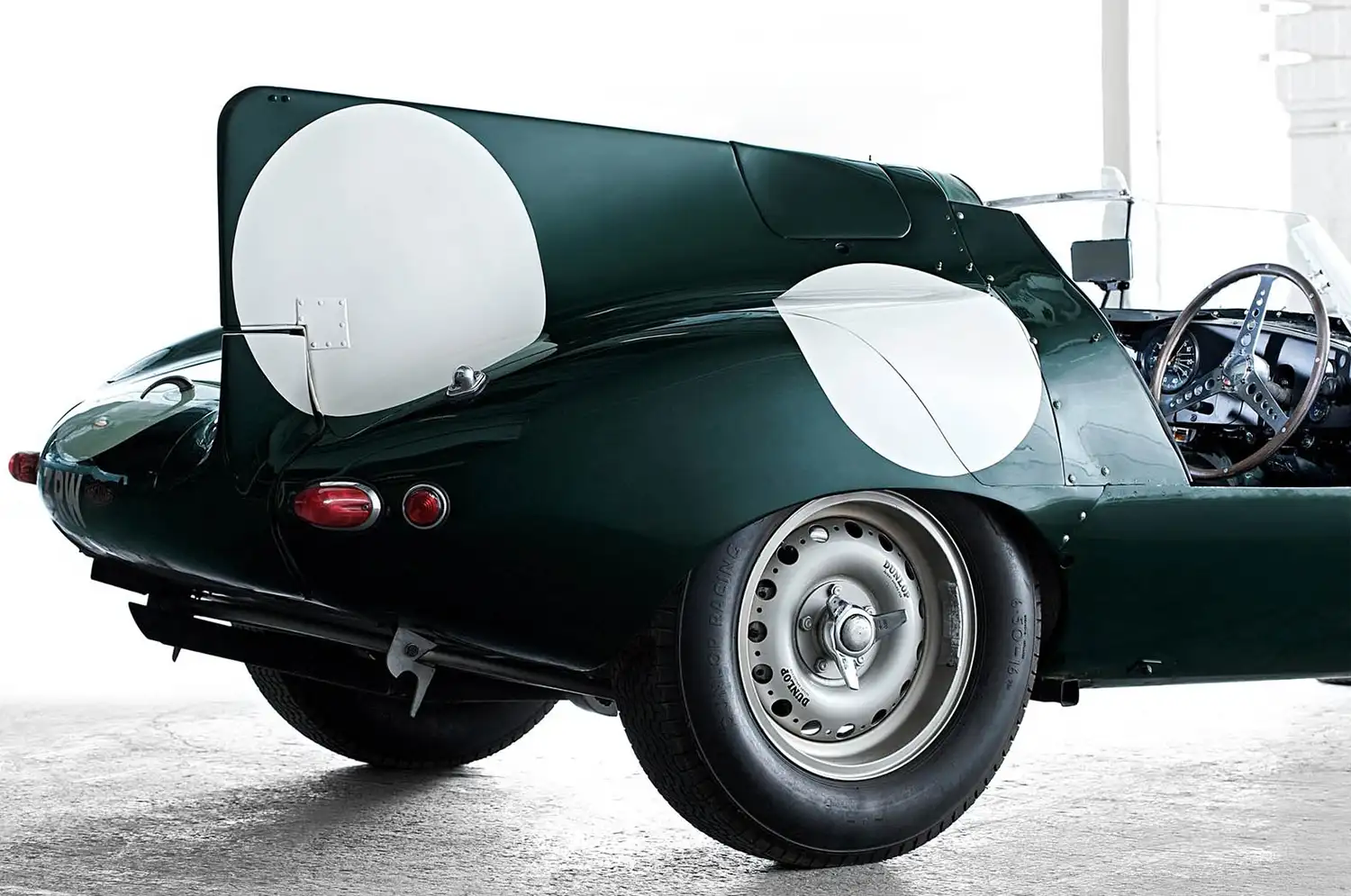
In 1955, the D-Type’s performance improved with the introduction of the long-nose bodywork. The race was marred by a tragic accident involving a Mercedes-Benz 300 SLR, which led to the withdrawal of Mercedes from the race. Although some blamed Mike Hawthorn for the incident, he and his co-driver Ivor Bueb went on to win the race.
The 1956 season was challenging for the factory team, with only one car finishing in 6th place at Le Mans. However, Ecurie Ecosse, a smaller team running a D-Type, clinched victory, beating works teams from Aston Martin and Ferrari. The Cunningham Team also raced several D-Types in the U.S., demonstrating the car’s versatility.
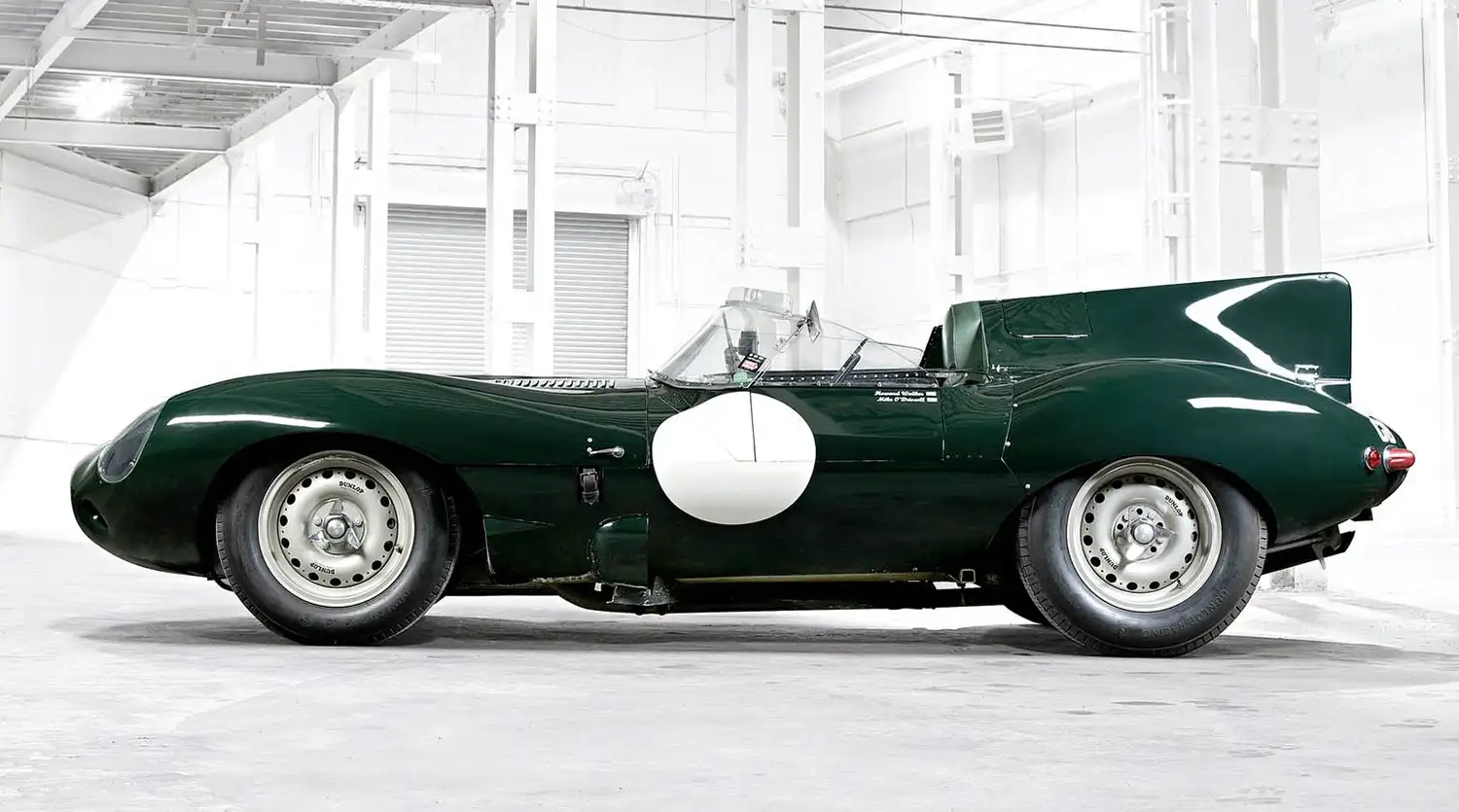
1957 was a standout year for the D-Type, with five of the top six positions at Le Mans occupied by D-Types, including a win for Ecurie Ecosse. However, with new regulations limiting engine size and increased competition, the D-Type’s dominance waned. Despite efforts to develop a 3-liter version of the XK engine, the D-Type’s competitive edge diminished, and by the early 1960s, it had faded from prominence.
Legacy
The Jaguar D-Type remains a symbol of innovation and excellence in racing. Its advanced design and performance continue to be celebrated, and elements of its body shape influenced the iconic Jaguar E-Type. Although it eventually gave way to newer models, the D-Type’s legacy endures as a testament to Jaguar’s engineering prowess and racing success.
Source: Jaguar
This Article use tools from Chatgpt
